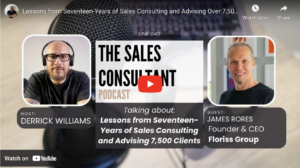Whether you’ve hired an Elite-A player, an A player or a B player, the next step is plugging them into a thoughtful and effective onboarding program to ensure their retention and high performance.
Ultimately, your onboarding initiative should be designed to predictably get new salespeople to cash flow breakeven and over-quota performance as quickly as possible. In order to accomplish this goal, hiring managers must do their part to demystify sales success for new hires and take the gamble out of getting started.
Here are some definitions to kick us off:
- Elite-A Player – The top 6% of all salespeople. They make it look easy, achieving 120% or more of sales goals four out of every five years. Their success may seem out of reach to other team members, but they are invested in everyone’s success.
- A-Player – The next 8% of all salespeople. They are comfortable with their success but not satisfied, achieving 100% or more of sales goals two out of every three years. They can also be counted on to help lead their team to improved performance.
- B-Player – The next 12% of all salespeople. Their performance may be unpredictable, but they will achieve at least 90% of sales goals two out of every three years. They respond quickly to sales coaching and demonstrate a high commitment to learning and to advancing their sales career.
Together, these represent the top 26% of all salespeople. Statistically, these are the only salespeople who can predictably contribute to your company’s growth.
Maximizing Your Dedication to the Recruiting Process
As we discussed in PART ONE of this series, top sales producers think like investors and want to know they are partnering with a hiring manager who can help them maximize their compensation plan quickly. And why shouldn’t they? After all, their success leads to success for the hiring manager and company alike.
Taking chance out of the process also means hiring managers will be empowered to identify hiring mistakes (i.e. Shadow People) much faster. The Shadow People who find their way into your hiring process are simply looking to “sell” their way into a high salary position with a product-service package that is in demand, and a manager who doesn’t manage the team too closely. We call these folks Shadow People, because they like to hide in the shadows created by hiring managers who are distracted or simply not well-trained. In fact, CSO Insights reveals that sales leaders spend only 20% of their time coaching and mentoring their sales teams. (By the way, more than 85% of sales managers fall into this category.)
No one is immune to these mistakes. Even the best designed and executed sales recruiting process will produce hiring mistakes about 10% of the time. There are many threats to a salesperson’s success that simply cannot be identified during the screening and selection steps of the process. But once identified, you should know that these threats to a salesperson’s success also threaten the company’s success, and should be addressed.
Should a C or D player slip by, hiring managers who have taken the gamble out of achieving sales success also have a very valuable advantage. The more predictable success becomes for a new hire, the quicker poor performers (i.e. hiring mistakes) can be identified and replaced. More definitions:
- C-Player – The next 68% of all salespeople. This largest group of salespeople may have the skills, but they are not committed to success. While they may achieve 90% of goals two out of every four years, they make excuses, don’t respond to sales coaching, and rely heavily on luck. You may see their potential, but they do not.
- D-Player – The bottom 6% of all salespeople. These team members rarely close a deal without help and rarely achieve goals. They generally lack commitment, focus and purpose. They are usually more interested in having a job, rather than the actual job they’ve been hired for. They are not willing or able to change. They make excuses, and you may have even caught them lying.
When 74% of the candidate pool can’t do the job you are hiring for, it’s too easy to make hiring mistakes that ultimately enrich your competitors and cost you time and money that can never be recovered. Make sure you check out PART ONE and PART TWO of this series so you are prepared to avoid these risks.
You’ve Made the Hiring Decision – Now What?
After doing the work required to source, screen and select your next top producer, you have to secure that new hire for a long, successful career with your team and company.
Your challenge is to get them off to a fast start and keep them producing at a high level, despite any threats that may emerge from your dynamic business environment.
Unfortunately, this isn’t the reality in many sales organization. Research from CSO Insights shows that 71% of companies take six months or more to fully onboard their new sales employees, with more than a 33% of companies taking upwards of nine months.
Here are 10 priorities we recommend when building your onboarding program:
- Complete a comprehensive goal-setting exercise to align core values & rewards.
- Use your variable comp plan to calculate pro-forma earnings that exceed key goals.
- Based upon the current sales cycle, model a sales pipeline required to deliver goals.
- Adjust your onboarding plan to align with the plan required to build the model pipeline.
- Teach your new hire the problem you solve (i.e. WIN), not just the solution you sell.
- Identify metrics to score their first 4-6 weeks — their new hire validation period.
- Identify metrics to score their next 6-8 weeks — their pipeline acceleration period.
- Identify metrics to score their next 8-12 weeks — their revenue generation period.
- Use sales coaching to reinforce what your new hire knows and teach what they don’t.
- Set clear expectations for CRM and sales meetings to make new hires better, not busier.
Removing the gamble from sales success means integrating your new hire into a system capable of delivering predictable success for any team member, not just those with unique connections or a preferred territory/named account list. It is not enough to hand your new hire a phone, computer and desk with an encouraging, “go get ’em tiger!”
Every step through this final phase of the sales hiring process is designed to help hiring managers easily separate true top performers from good interviewers who feel more comfortable hiding in the shadows. The process also allows you to identify and dismiss future poor performers in the first 4-6 weeks by holding them accountable to predefined metrics for success.
Why Change?
Is it really worth the effort to adopt the advice provided in this three-part series?
The CFO of a $27M company recently used this calculator to evaluate her 8-person sales organization. Turns out her sales leader, with the support of an internal recruiter, hired 22 salespeople over the previous 5 years. In about 15-minutes our calculator uncovered $5.36M of lost gross profit created by these bad hiring decisions.
Their average annual sales turnover rate was 50%, about average for their industry. Now, after changing their approach, the sales team retains 92% of its members year-over-year. In fact, their sales team is so efficient 5 salespeople now produce what use to take 8. Today, they are healthy enough to confidently scale their sales organization in support of an aggressive M&A strategy.
They also have evidence-based answers to important questions they previously could only pluck from air, such as:
- How long should it take to hire this salesperson?
- Should we consider a field or an inside resource?
- Can we afford to pay what they will demand?
- How long should it take them to be productive?
- How much should it cost to hire this person?
- How long should it take to get a return on our investment?
- Is the candidate pool big enough?
- Should we be hiring more than one salesperson, just in case?
- Should we settle for the best available candidate or hold out for a top performer?
A significantly better process will immediately produce significantly better results.
Business leaders and hiring managers who make the changes required gain more confidence as they plan for and deliver growth. New sales team members feel better about the choice they made and the future of their careers. Nothing is stronger than this sales symbiosis, and you can achieve this relationship more often by applying Parts 1, 2, and 3 of this series to your hiring process.
Where to Start?
To better understand whether you have blind spots or shadows in your hiring process, reach out to set up a quick conversation. We are happy to help.










